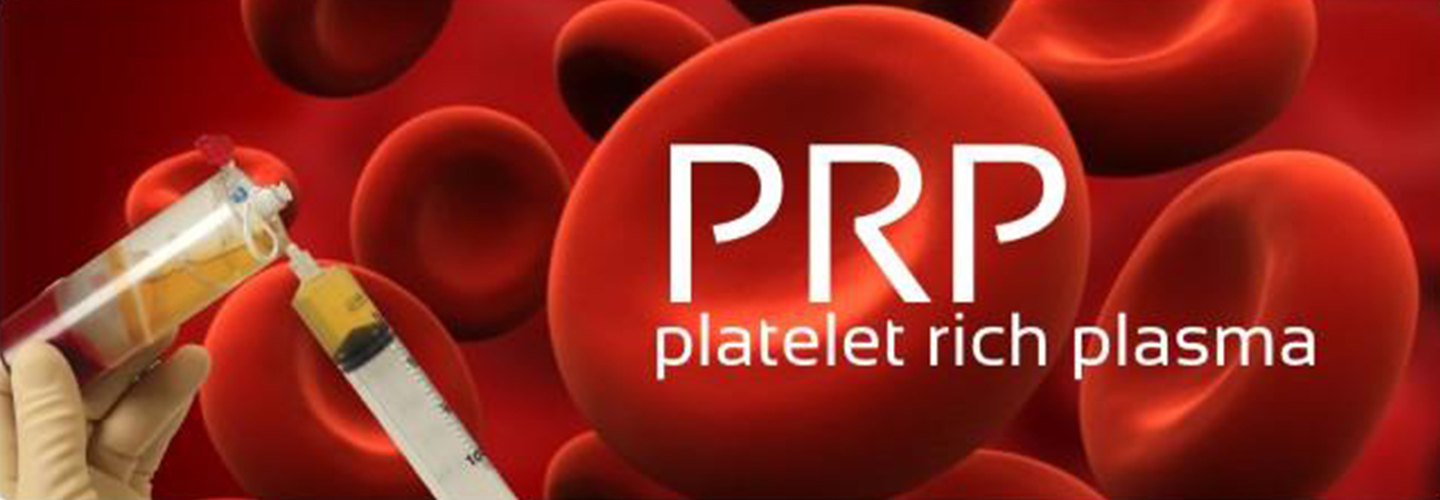
Platelet Rich Plasma therapy (PRP) is a groundbreaking non-operative treatment option that relieves pain by naturally promoting long-lasting healing of musculoskeletal conditions. The acronym PRP has most recently been featured in the news with the rising popularity of the treatment among professional athletes, recreational athletes, and highly functional individuals. Many have attributed PRP injections, particularly for athletic injuries, with enabling them to return back to regular activities and competition with minimal to no pain at all. This rapidly emerging technique shows very promising potential for many conditions such as arthritis, tendonitis, and ligament sprains and tears.
PRP therapy presents patients with a long lasting, permanent solution through the body's natural healing process. PRP is not something that wears off over time as with a traditional pain injection.
WHAT IS PRP (PLATELET RICH PLASMA)?
Platelet rich plasma commonly referred to as "PRP", is human blood that is spun down and separated producing a concentration of platelets above normal values. Platelets are the clotting cells of our blood, but they also have great potential in enhancing healing of muscle, tendon, and ligaments. Studies suggest that growth factors released by platelets recruit reparative cells, may augment tissue repair, and accelerate soft tissue healing.
PRP has been used in surgery to augment shoulder rotator cuff and Achilles tendon repair. PRP has also shown great promise when injected into chronically injured tendons and when proper healing has not taken place. Many clinical trials are underway to determine the full spectrum of use for PRP. In a spine practice, clinicians have anecdotally noted promising results when PRP is injected into spinal ligaments, into facet joints, and/or intervertebral discs when other traditional treatments have failed.
THE SCIENCE OF PRP:
Our blood is made up of 93% red blood cells, 6% white blood cells, 1% platelets and plasma. Platelets are best known for their function of blood-clotting to stop bleeding. Platelets, however, are much more significant than this, as human platelets are also a critical component in injury healing.
Platelets are naturally extremely rich in the connective tissue growth and healing factors. The body’s first response to tissue injury is to deliver platelets to the area. Platelets initiate repair and attract stem cells to the injury. Injecting these growth factors into damaged ligaments, tendons, and joints stimulate the natural repair process. In order to maximize the healing process, the platelets must be concentrated and separated from the red blood cells. The goal of PRP is to maximize the number of platelets while minimizing the number of red blood cells in a solution that is injected into the injured or pained area(s). In summary, PRP creates, stimulates, and accelerates the body's natural healing process.
WHICH CONDITIONS BENEFIT MOST FROM PRP?
PRP treatment works most effectively for chronic ligament and tendon sprains/strains that have failed other conservative treatment, including but not limited to:
- Lumbar spine disc pain
- Rotator cuff injuries, including partial-thickness
- Shoulder pain and instability
- Tennis and golfer’s elbow
- Hamstring and hip strains
- Knee sprains and instability
- Patellofemoral syndrome and patellar tendonitis
- Ankle sprains
- Achilles tendonitis & plantar fasciitis
- Knee, hip, and another joint osteoarthritis
- Nerve entrapment syndromes, such as Carpal Tunnel Syndrome
- Sacroiliac (SI) joint dysfunction and pain
- Lumbar and cervical facet dysfunction and pain
Additionally, PRP can be effective for many cases of osteoarthritis by stimulating healing of cartilage and reducing pain and disability. This includes:
- Knee arthritis
- Hip joint arthritis
- Shoulder arthritis
- Ankle arthritis
WILL PRP TREATMENT HELP ME AVOID SURGERY?
With any treatment option, the outcome and sustained results are highly dependent on the extent of the injury. For example in the case of mild arthritis, PRP could potentially prevent the development of further degeneration. However, in advanced arthritic degeneration, the goal of the treatment is to minimize pain and improve function. PRP (potentially if used in tandem with the use of stem cells) could avoid surgery such as joint replacements and potentially spinal fusion.













